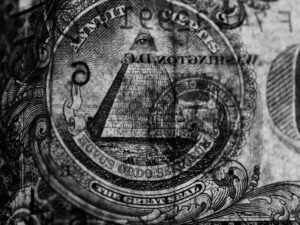Promoting awareness/educating community
It’s a Saturday morning in Liberty Park, a pleasant 80-acre public green on the east side of the Salt Lake Valley. By 7 a.m. the sun has crossed the threshold of the mountains, and despite the welcome warmth the chill of autumn hangs in the air. The regulars are out for their weekend ritualistic run, braving the mosquitoes out in swarms. It’s a sight that could be just about from any weekend morning, and yet on this particular Saturday, something extraordinary was happening.

This archived article was written by: Joshua H. Behn
It’s a Saturday morning in Liberty Park, a pleasant 80-acre public green on the east side of the Salt Lake Valley. By 7 a.m. the sun has crossed the threshold of the mountains, and despite the welcome warmth the chill of autumn hangs in the air. The regulars are out for their weekend ritualistic run, braving the mosquitoes out in swarms. It’s a sight that could be just about from any weekend morning, and yet on this particular Saturday, something extraordinary was happening.
On the north side of the park, a cadre of volunteers gathered. Tents were raised, white and red balloons were inflated, and sign-in tables were readied for the 8 a.m. registration. It’s a hive of activity, and Utah AIDS Foundation staff members John Ordway, Teresa Hyatt and Tyler Fisher busily coordinated the efforts of their volunteer crews to prepare for the 21st Annual Utah AIDS Run/Walk for Life.
For 21 years, the Utah AIDS Foundation sponsored the AIDS walk as part of their fund raising efforts. UAF is a community support organization with a two-fold objective: offering a variety of programs to hundreds of Utahans with HIV/AIDS and to promote prevention awareness and education to the community.
The AIDS walk has expanded over the years. This year, in addition to the 10 K walk, UAF introduced a 22- mile bike tour. Both began at Liberty Park and routed through the downtown district of Salt Lake, ending at the 9th and 9th street festival.
Teresa Hyatt, chief financial officer of UAF, was optimistic about this year’s event. With over 450 walkers and 75 bicyclists registered, UAF expected to reach its goal of $50,000.
The walkers and bicyclists were an assortment of citizens from around the state, from many backgrounds. This is a true family event, and individuals of all ages came to support this important event: infants, toddlers, and teenagers were a common site. To add to this diversity are the teams of walkers.
Darin Hathaway, drama director at Judge Memorial High School in Salt Lake, is heading up one of such teams. Hathaway is directing the fall production, the hit musical RENT (student version) and has brought 19 members of the cast to participate in the walk and perform the musical number Seasons of Love. Surprisingly, Judge Memorial High School is a Catholic parochial school run by the Archdiocese of Utah, and it’s wonderful to see them attempting such controversial subject matter. Perhaps it’s fitting though as Father Mychael Judge would have been proud. Fr. Judge, no namesake to Judge Memorial High’s founder, was a Franciscan priest and chaplain of the NYC Fire Department and was a strong supporter of AIDS charities and outreach in the 1990s. He was killed in the World Trade Center collapse in 2001.
For many who participated, AIDS is not just a name, but the face of someone close to them. Dee Williams was volunteering, just as she has for numerous other UAF committees. A transplant to Salt Lake, she had previously lived in South Florida where she lost several close friends to AIDS. Similarly, Chris Wellington was there to honor the memory of a former coworker. Twenty one years ago, when the AIDS walk was created, she began walking to support her coworker who contracted HIV from an unfaithful husband. Standing 5’2, the grandmotherly Wellington fondly recalls the last walk that her friend participated in, where they carried her across the finish line (She passed away at the age of 32, leaving behind a 2-year old daughter). Her message to those who participate is that “people shouldn’t be afraid of it [AIDS] or to talk about it.”
The terrible days of the 1980s and 1990s where AIDS decimated the populations of United States inner cities are long gone thanks to advances in retro-viral medication that enables those affected by HIV and AIDS to live long, healthier lives. Yet, memories are long and the horror of those early days still lives in the minds of those family members and friends, the survivors. They also know that AIDS is far from gone, and remains the number one killer on the African and Asian continents. They walk, in memory, and to keep the flame of hope alive that some day there will be a cure.




